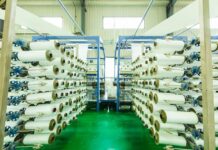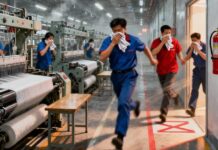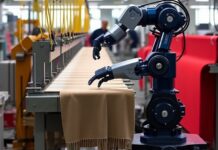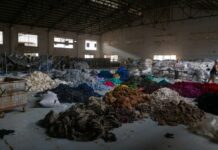Reshoring and Nearshoring: Will the US-EU Trade Deal Spark a Textile Manufacturing Comeback in America?
The July 2025 US-EU trade deal, with its 15% tariff on most European textile imports, has ignited fresh debate about America’s textile manufacturing future. For decades, the industry has steadily migrated overseas in pursuit of lower labor costs and streamlined production. Now, with European competitors facing new cost burdens and supply chain vulnerabilities exposed by recent global disruptions, many are asking: Is this the moment for textile manufacturing to return home?
The Backdrop: Decades of Decline, Signs of Revival
The US textile industry has experienced a dramatic transformation over the past thirty years. Employment fell from approximately 850,000 jobs in 2000 to just over 350,000 by 2010. Entire communities built around textile mills—particularly in the Carolinas, Georgia, and Alabama—faced economic devastation as production shifted to Asia and Latin America.
Yet beneath this narrative of decline, subtle signs of renewal have emerged. The industry invested $3 billion in new plants and equipment in 2022, while specialized sectors like technical textiles, protective fabrics, and medical textiles have shown consistent growth. Companies like Mount Vernon Mills have pivoted from mass-market denim to high-value fire-resistant fabrics, demonstrating how American manufacturers are carving out niches in innovation-driven segments.
The Trade Deal: A Catalyst for Change?
The new 15% tariff creates immediate competitive advantages for US textile producers. European imports that once undercut domestic alternatives now carry additional costs, potentially shifting purchasing decisions toward American suppliers. This protection extends across apparel, home textiles, and industrial fabrics—sectors where European brands have maintained strong market positions.
Early indicators suggest momentum is building. US textile manufacturing job postings have increased significantly, with over 21,000 textile-related positions available across the country. Companies like Apex Mills have invested $3.1 million to acquire former HanesBrands facilities in Virginia, specifically citing opportunities created by changing trade dynamics.
Reshoring Realities: Automation Over Labor
However, the comeback won’t mirror the industry of decades past. Today’s textile reshoring is fundamentally different—driven by automation, specialization, and proximity to innovation centers rather than low-cost labor. Modern US textile facilities employ sophisticated technology that reduces dependency on manual workers while producing higher-value products.
Companies like Tex-Tech Industries have announced investments exceeding $24.8 million in new manufacturing centers focused on aerospace, automotive, and defense applications. This represents the new American textile model: smaller workforces producing specialized, high-margin products that leverage technological advantages rather than competing on basic manufacturing costs.
Nearshoring: The Mexico Factor
Alongside domestic production, nearshoring to Mexico and Central America has accelerated dramatically. The combination of US trade policies and supply chain resilience concerns has made proximity increasingly valuable. Mexico’s textile exports to the US have grown consistently, benefiting from both USMCA trade provisions and companies seeking alternatives to Asian suppliers.
This nearshoring trend complements rather than competes with domestic reshoring. While Mexico handles volume production for basic apparel and textiles, US facilities focus on technical fabrics, rapid prototyping, and small-batch specialized products that benefit from close customer relationships and quick turnaround times.
Investment Patterns: Where the Money Flows
Recent investment announcements reveal strategic priorities. Hollingsworth & Vose committed $40.2 million to expand their Virginia facility for advanced materials. Fire-Dex opened a new 25,000-square-foot facility in North Carolina for protective equipment manufacturing. These investments target high-performance segments where quality, innovation, and speed-to-market outweigh pure cost considerations.
The pattern is clear: successful reshoring focuses on products where American advantages—skilled workforce, R&D capabilities, proximity to end markets—justify higher production costs. Companies aren’t competing with Bangladesh on basic t-shirts; they’re creating American-made technical textiles that command premium prices.
Challenges and Limitations
Several factors constrain the reshoring potential. Most critically, the US lacks the infrastructure and workforce scale for mass-market apparel production. Data shows that over half of all textile and apparel facilities employ fewer than 10 people—hardly sufficient for supplying a nation of 340 million consumers.
Labor shortages present another obstacle. Despite job creation, finding skilled workers remains challenging in regions where textile knowledge was lost during the offshoring wave. Training programs and technical education initiatives are struggling to rebuild these capabilities quickly enough to meet growing demand.
Cost pressures persist as well. Even with tariff protection, American wages, benefits, and regulatory compliance create structural cost disadvantages for commodity products. Success requires moving up the value chain to products where these costs represent a smaller percentage of total value.
Innovation as the Differentiator
The most promising aspect of textile reshoring lies in innovation integration. US facilities increasingly combine manufacturing with R&D, creating feedback loops that accelerate product development. Companies like Phase Change Solutions invest in advanced materials for temperature management, leveraging proximity to research institutions and end customers.
Smart textiles, incorporating sensors and connectivity, represent another frontier where American manufacturers hold advantages. The convergence of textile production with electronics and software development favors locations with strong technology ecosystems—assets the US possesses in abundance.
Government Policy and Support
Federal and state policies have provided additional momentum. The CHIPS Act and Inflation Reduction Act include provisions supporting domestic manufacturing, while state governments compete aggressively to attract textile investments. Virginia’s successful recruitment of textile companies demonstrates how targeted incentives can accelerate reshoring decisions.
However, policy support remains inconsistent. While tariffs provide protection, other regulations and costs continue to disadvantage domestic production. A more comprehensive industrial policy—addressing workforce development, infrastructure, and regulatory streamlining—could significantly amplify reshoring momentum.
The Verdict: Selective Renaissance
Will the trade deal spark a textile manufacturing comeback in America? The answer is nuanced: yes, but not the comeback many envision. The renaissance will be selective, focusing on high-value segments where American advantages matter most. Commodity textiles will likely remain overseas, while technical fabrics, protective equipment, and innovation-intensive products increasingly return home.
This new American textile industry will employ fewer people than its predecessor but create higher-value jobs. It will leverage automation and proximity advantages rather than competing on labor costs. And it will serve specialized markets that value quality, innovation, and supply chain security over pure cost minimization.
The 2025 trade deal provides important tailwinds for this transformation. Combined with ongoing supply chain restructuring and technological advancement, it creates conditions for a meaningful but fundamentally different kind of textile manufacturing resurgence in America. The comeback is real—it just won’t look like the industry we remember.



































